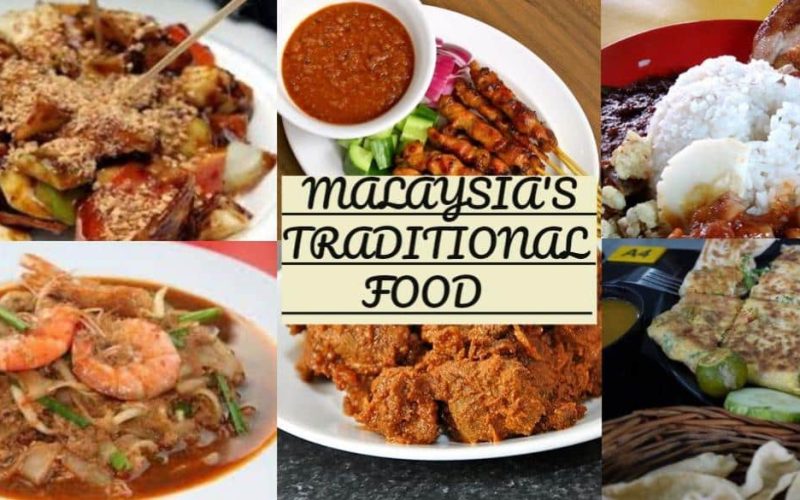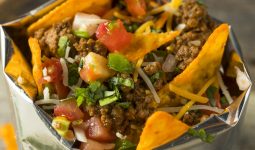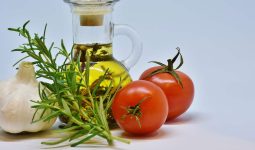The first thing to know about Malaysians is that they are food connoisseurs, and Malaysia boasts a diverse range of traditional Malaysian food.
Malaysian cuisine does not receive the international respect it deserves. But the fact remains that this stuff is delicious!
Malaysian cuisine consists of many wonderful components influenced by Chinese, Indian, and Malay.
In this post, we explore Malaysian cuisine and food more deeply and list some of the country’s most iconic meals to sample.
Furthermore, a list of Malaysian foods to try is bound to be unique and similar to New York. Some foods may not have originated in Malaysia but have made a home.
Rendang
Rendang is a famous traditional Malaysian food that comes with beef, chicken, or lamb. This spicy beef dish from Indonesia has captured the hearts of many in Southeast Asia.
Rendang is a dish that mixes several rich spices from the region with coconut milk to make a thick sauce that is simmered with the meat. However, as a result, A meal of very soft meat with a deep flavor is difficult to forget.
Laksa
Laksa is a spicy and flavorful noodle dish made of thick white rice noodles and a curry-like soup base with prawns, fish cake, beancurd, and cockles.
Many people consider this to be comfort food, and it may be found in a variety of Malaysian restaurants.
In Malaysia, there are numerous variations of laksa. For example, in Penang, a Malaysian state on the Northwest coast, the local version of laksa is much sourer since it is served in a tangy fish broth made with fresh mackerel, herbs, pineapple, and spices.
Mamak mee Goreng
This Indian Muslim meal is the whole shebang. Noodles in yellow. Either beef or chicken. Shrimp. Soy sauce, vegetables, and eggs A dash of chile for an enticing kick.
Sounds easy, doesn’t it? However, unfortunately, you won’t be able to recreate this one at home because it won’t taste the same as it did when you dined at that gritty Malaysian hawker stall.
Nasi lemak
Nasi lemak, which translates as “fat rice,” is made of coconut rice, prawn sambal, fried anchovies, peanuts, cucumber slices, and ayam rendang. However, there may be variances in the accompaniments, but rice, cucumber, and peanuts are very standard.
Nasi Kerabu
This popular traditional Malaysian food is a rice dish distinguished by its blue rice, served with fried chicken, an egg, and fried keropok.
Nasi lemak
Nasi Lemak is a typical Malaysian food dish that has been dubbed the country’s unofficial national dish. The rich and aromatic rice soaked in coconut cream before steaming is a major attraction.
It is then accompanied by a range of traditional Indonesian meals such as salted peanuts with ikan-bilis (anchovies), hard-boiled eggs, preserved vegetables, fried chicken wings or fish, and sweet sambal chile.
Murtabak
Murtabak is a packed omelet pancake that can be eaten all day. This Indian Muslim cuisine pancake is packed with minced meat, onions, and spicy sauces before pan-fried until golden brown.
Also, Murtabak can be eaten as a meal, but it is more commonly consumed as a snack because it is essentially a street cuisine that is easy to consume on the go.
Because it was brought to these regions by early Indian Muslim settlers, the dish is often found in Southeast Asia, Saudi Arabia, Indonesia, Malaysia, and Singapore.
Popiah
Popiah is a Hokkien term that means “thin crepe,” the main component used to wrap this Chinese delicacy.
It’s essentially a Chinese crepe roll loaded with shredded turnip, bean sprouts, eggs, shallots, and pork and flavored with shrimp paste, a combination of local sauces, and chili paste.
Furthermore, this traditional Malaysian food, Popiah, has a sweet and savory flavor profile. When combined with the generous amount of turnip in the roll, the snack becomes refreshing and flavorful.
People will occasionally eat this because the ingredients are so nutritious and light.
Char Kway Teow
Char Kway Tiao has various versions, but Malaysia’s version has won praise worldwide. Char Kway Tiao is a Hokkien (a Chinese dialect) word for both fried (Char) and flat rice noodles (Kway Tiao).
Flat rice noodles are stir-fried with crispy pork fat, soy sauce, cockles, bean sprouts, chives, eggs, and occasionally prawns in this Chinese noodle dish.
A good plate of Char Kway Tiao is usually judged by the chef’s effective control of “wok hei” (wok heat) and the proper combination of fresh ingredients.
Curry Laska
For those who enjoy their soups creamy, this is the laksa for you. The heat is the same, but the soup has been thickened with coconut milk.
Pisang Goreng
Pisang Goreng is a traditional local fried banana fritter delicacy withstood the test of time. This is a snack that many Malaysians grew up with, and it is still one of Malaysia’s favorite foods today.
It has a crunchy outside and a soft interior. Pisang Goreng can be found at various local street booths and cafes. Serve it as a snack or as a dessert after a meal.
Satay
The original Malaysian satay is skewered meat barbecued over a charcoal flame to create the effect of smoked meat.
The dish is available in chicken, beef, or lamb and is served with Malay rice dumplings wrapped in coconut leaf and peanut sauce.
Furthermore, this traditional Malaysian food is widely accessible as one of Malaysia’s hallmark meals if you see a stand burning with delicious barbeque flavor.
Roti John
Another popular street dish in Malaysia is roti john, an omelet sandwich popular among Malaysians and other countries in the region.
Its origins can be traced back to Singapore, a neighboring country originally a part of Malaysia.
Furthermore, this famous snack consists of a pan-fried sliced French baguette with toppings such as minced mutton, sliced onions, and eggs. It goes well with mayonnaise, ketchup, barbecue sauce, and chili.
Mee siam
Mee Siam, which translates to “Thai noodles” in Malay, consists of skinny rice noodles served in a thick and sour gravy mixed with tamarind, shrimp, shrimp paste, and soya bean paste.
Hard-boiled egg, fried bean curd, bean sprouts, and Chinese chives top this Malaysian meal. A heap of chili paste can be added to provide a powerful punch for those who prefer the hotter alternative.
Dry Mee Siam, a stir-fried variation, has become more widely available in recent years. Mee Siam, like Mee Rebus, is commonly consumed during breakfast.
Mee rebus
This traditional Malaysian food is a simple noodle meal made with yellow noodles and served in a thick sauce with a hard-boiled egg, spring onions, bean sprouts, fried shallots, tau pok (fried beancurd), sliced green chilies, and a dash of lime juice.
In addition, this traditional Malaysian food has thick gravy, consisting of mashed sweet potato, a rich soup of tiny shrimps, herbs, and aromatics is the key to an excellent plate of Mee Rebus.
To enhance the flavor, ground peanuts are sometimes added. Mee Rebus is often eaten for breakfast, but many people eat it as a meal.
Otak- Otak
Otak-otak, also known as otah, is a thick paste made of cubed or minced fish, chopped onions, coconut milk, and flavorful local spices bonded with tapioca starch and egg.
The spicy Otak-otak paste is traditionally wrapped in banana leaves and roasted over an open charcoal fire. Other preparation techniques included heating the mixture and cut it to size before serving.
Otak-otak is a spicy appetizer that goes well with buns or rice, and it is frequently paired with Nasi Lemak.
Fried rice
A full and hearty rice dish fried with carrots, peas, and pork. More opulent variations of the dish can contain an egg, little anchovies, and anything.
Banana leaf rice
Eating banana leaf rice is an unforgettable experience. As the name suggests, this dish is served on a large banana leaf. In the center, a bed of white rice is topped with a crispy poppadom and surrounded by an array of veggies.
Ketupak
Ketupat is a rice dumpling covered in finely woven coconut leaves and served in a diamond-shaped container.
Ketupat originated in Indonesia, is frequently served with satays (skewered grilled meat), and is a must-have at Malay festivals, weddings, and traditional celebrations.
Interestingly, according to old custom, Ketupat was also hung at the front of the home and doorways to ward off evil spirits. It’s no surprise that ornate Ketupats are frequently seen in Malay households during important celebrations!
Nasi Kerabu
Nasi Kerabu is a Malay rice dish from the Malaysian state of Kelantan. It is a popular blue rice dish served with dried fish or fried chicken, crackers, and local pickles.
The blue-colored tinted rice distinguishes this dish from other Malaysian rice meals since it is not only visually stunning but also has an olfactory smell unlike any other.
The blue color is derived from the petals of butterfly-pea blossoms, which are cooked with rice.








